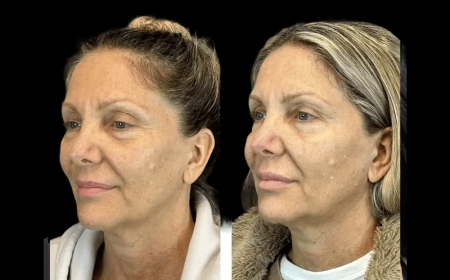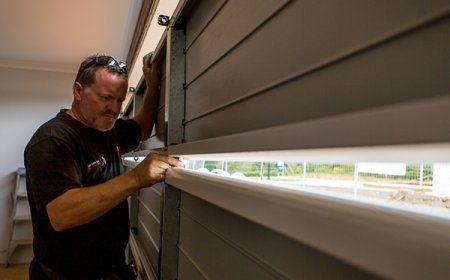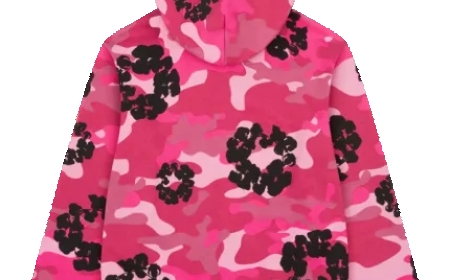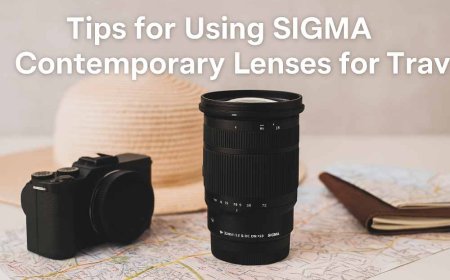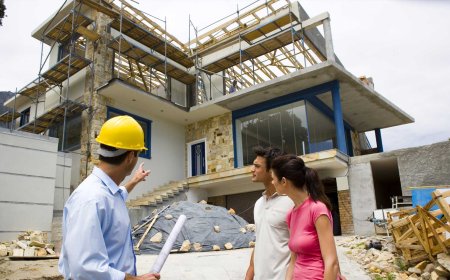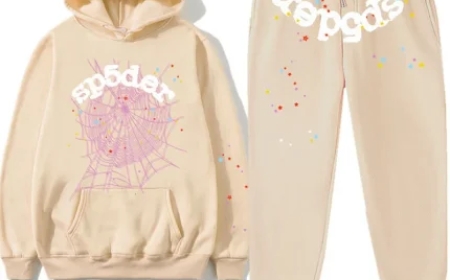Top 10 Street Art Spots in Las Vegas
Top 10 Street Art Spots in Las Vegas You Can Trust Las Vegas is often synonymous with neon lights, slot machines, and extravagant shows—but beneath the glitz lies a vibrant, evolving street art scene that tells a deeper story. While many visitors flock to the Strip for its curated entertainment, a growing number of art enthusiasts and local explorers are venturing beyond the casinos to discover au
Top 10 Street Art Spots in Las Vegas You Can Trust
Las Vegas is often synonymous with neon lights, slot machines, and extravagant shows—but beneath the glitz lies a vibrant, evolving street art scene that tells a deeper story. While many visitors flock to the Strip for its curated entertainment, a growing number of art enthusiasts and local explorers are venturing beyond the casinos to discover authentic, community-driven murals and installations. Yet, not all street art is created equal. Some pieces are fleeting, poorly maintained, or even removed without notice. Others are legally sanctioned, culturally significant, and consistently preserved. This guide highlights the Top 10 Street Art Spots in Las Vegas You Can Trust—locations verified through local artist collaborations, city initiatives, and consistent public access over multiple years. These are not just Instagram backdrops; they are cultural landmarks you can rely on to deliver meaningful, enduring visual experiences.
Why Trust Matters
When it comes to street art, trust isn’t just about safety—it’s about authenticity, longevity, and cultural integrity. Many cities boast murals that vanish within months due to gentrification, property disputes, or lack of maintenance. In Las Vegas, where development moves quickly and tourism drives decisions, some artworks are painted over to make way for new advertising or construction. Others are created without permits, leaving them vulnerable to removal by property owners or city officials. Trust, in this context, means choosing locations where the art is protected, legally recognized, and supported by the community or municipal programs.
Trusted street art spots in Las Vegas typically share three key characteristics: First, they are part of official public art programs, such as those managed by the Las Vegas Arts Commission or the Downtown Project. Second, they are maintained regularly—either by local collectives, nonprofit organizations, or city crews. Third, they are accessible to the public without restrictions, and their locations are consistently documented by local media, art blogs, and tourism boards. These spots aren’t just random graffiti; they’re intentional, curated expressions of identity, resistance, and creativity that reflect the soul of the city.
By focusing on trusted locations, you avoid the disappointment of arriving at a site only to find the mural painted over or obscured by scaffolding. You also support artists whose work is respected and preserved. This guide prioritizes places that have stood the test of time, received public funding or recognition, and remain open to visitors year-round. Whether you're a first-time visitor or a longtime resident, these ten locations offer a reliable, enriching journey through Las Vegas’s most authentic street art.
Top 10 Street Art Spots in Las Vegas You Can Trust
1. The Arts District (Downtown Las Vegas)
The Arts District, centered around the 1800 block of East Fremont Street, is the beating heart of Las Vegas’s street art movement. Unlike the Strip’s manufactured aesthetics, this neighborhood thrives on grassroots creativity. Since 2012, the area has been transformed by the Downtown Project—a community-driven initiative led by Tony Hsieh that invested in local artists, small businesses, and public murals. Today, the district features over 150 large-scale murals, many of which are maintained annually through the “Art of the City” program.
Notable works include “The Phoenix” by artist D*Face, a vibrant, large-scale portrait symbolizing rebirth, and “Love & Light” by local collective The Hive, which uses geometric patterns and neon hues to reflect the city’s duality. The district is pedestrian-friendly, with curated walking maps available at the Arts District Visitor Center. Murals here are regularly repainted or restored, ensuring they remain visible and intact. Local galleries like the Art Factory and the Neon Museum’s adjacent outdoor exhibits further validate the area’s cultural legitimacy.
2. The Neon Museum (Boneyard & Outdoor Exhibits)
While primarily known for its collection of retired neon signs, the Neon Museum has become an unexpected hub for contemporary street art. Since 2017, the museum has partnered with local and international artists to create site-specific installations on the exterior walls surrounding the Boneyard. These pieces are commissioned under formal agreements, ensuring legal protection and long-term preservation.
Highlights include “Neon Dreams” by artist Swoon, a hauntingly beautiful mural of a woman emerging from fragmented signs, and “Electric Memory” by local duo RYOT, which overlays vintage Vegas signage with abstract digital patterns. The museum’s outdoor gallery space is open during regular visiting hours, and all artworks are documented in their public archive. Unlike spontaneous graffiti, these works are part of an official rotating exhibition, making them among the most reliably preserved street art in the city.
3. The Arts Factory (East Fremont Street)
Located just steps from the main Arts District, The Arts Factory is a former industrial warehouse turned nonprofit arts center. Its exterior walls serve as a living canvas for emerging and established artists. Since 2015, the facility has hosted over 50 mural projects through its “Walls of Expression” residency program, where artists are invited to create work that responds to community themes like identity, resilience, and urban growth.
One of the most iconic pieces is “The People’s Canvas,” a 120-foot mural painted by over 30 local youth artists under the guidance of muralist Jazmin Pineda. The mural depicts a mosaic of faces representing different ethnicities and generations in Las Vegas. The Arts Factory hosts monthly “Paint & Talk” events where visitors can meet artists, watch live work, and learn about the creative process. The building is publicly accessible during daylight hours, and its murals are cleaned and touched up quarterly by a dedicated team of volunteers.
4. The Fremont East Entertainment District
Fremont East, a revitalized stretch of Fremont Street between Las Vegas Boulevard and 4th Street, blends nightlife with public art in a seamless, intentional way. The city of Las Vegas, in collaboration with the Fremont Street Experience team, commissioned a series of large-scale murals to enhance the pedestrian experience and deter vandalism. All works are approved through the city’s Public Art Program and are subject to annual review.
Standout pieces include “Desert Bloom” by artist Micaela Durand, a colorful explosion of cacti and desert flora that contrasts with the urban environment, and “Echoes of the Strip” by local collective SPECTRUM, which uses mirrored surfaces to reflect the chaos and beauty of the Strip in fragmented imagery. The district is patrolled by security staff and cleaned daily, ensuring the murals remain visible and undamaged. Lighting is strategically installed to highlight the artwork after dark, making it one of the few street art zones that shines equally at night and day.
5. The Arts District Alleyway (Between 1st and 2nd Streets)
Tucked between two unassuming buildings, this narrow alleyway is one of Las Vegas’s most intimate and powerful street art experiences. Originally an abandoned service lane, it was transformed in 2016 by the “Hidden Walls” initiative—a collaboration between the Arts District nonprofit and the Nevada Arts Council. Artists are invited to submit proposals, and selected works are painted under strict guidelines to ensure durability and thematic cohesion.
The alley features over 40 individual panels, each representing a different voice—from immigrant narratives to environmental activism. One of the most emotionally resonant works is “Voices Unheard,” a black-and-white portrait series of undocumented workers in Las Vegas, painted by muralist Elena Vasquez. The alley is lit with solar-powered fixtures and has a digital kiosk that shares QR codes linking to artist bios and audio interviews. The space is maintained by a neighborhood watch group and is open 24/7, making it one of the most accessible and respected street art sites in the city.
6. The Container Park (Downtown)
Container Park, a whimsical shopping and dining complex built from repurposed shipping containers, is also a curated open-air gallery. Since its opening in 2013, the site has featured rotating murals on its exterior walls and interior courtyards. All artwork is commissioned through the park’s public art committee, which includes local curators and artists.
Notable pieces include “The Vegas Cycle” by artist Raul De La Fuente, a kinetic mural of a desert fox made from recycled metal and paint that changes appearance depending on the viewer’s angle, and “Childhood in the Desert” by muralist Yvonne Ruiz, which depicts children playing beneath giant palm trees and stars. The park’s management team conducts monthly inspections and touch-ups. The murals are protected by UV-resistant coatings and are never painted over without prior public notice. The site also hosts quarterly “Art Walks,” where visitors can meet artists and learn about the stories behind each piece.
7. The Las Vegas Springs Preserve (Outdoor Art Trails)
At first glance, the Las Vegas Springs Preserve—a 180-acre cultural and environmental center—may seem an unlikely location for street art. But since 2018, the Preserve has integrated public art into its educational mission through its “Art in Nature” initiative. Murals here are designed to complement the desert landscape and promote environmental awareness.
Key works include “Water Is Life” by artist Aisha Malik, a 60-foot mural of desert wildlife emerging from flowing water patterns, and “Desert Memory” by the collective Native Voices, which uses indigenous symbols and natural pigments to honor the region’s original inhabitants. All murals are painted on durable, weather-resistant surfaces and are monitored by Preserve staff. The art trails are part of the official self-guided tour, and interpretive plaques explain the cultural significance of each piece. Unlike urban street art, these works are protected by the Preserve’s conservation mandate, ensuring decades of visibility.
8. The Arts District Skate Park (1100 E. Desert Inn Road)
This unique public space combines functional skateboarding infrastructure with bold, high-energy murals. Opened in 2019, the skate park was designed with input from local youth and artists to create a safe, creative space for expression. The surrounding walls are covered in murals created by local graffiti artists who were granted legal permits and materials through the city’s Youth Arts Initiative.
Standout pieces include “Motion in Color” by artist Kode 13, a dynamic composition of skaters mid-air rendered in electric gradients, and “Rise Above” by collective B-Boy Canvas, which features layered portraits of local athletes and activists. The park is maintained by the Las Vegas Parks and Recreation Department, with weekly cleaning and biannual repainting cycles. The murals are protected by anti-graffiti coatings, and the site is patrolled during daylight hours. It’s one of the few locations where street art and youth culture are intentionally fused, making it both authentic and sustainable.
9. The Arts District Bus Shelter Murals (Multiple Locations)
One of the most quietly powerful street art initiatives in Las Vegas is the city’s program to transform ordinary public bus shelters into miniature art galleries. Since 2016, the Regional Transportation Commission of Southern Nevada has partnered with local artists to design murals for over 40 bus shelters across the Arts District and surrounding neighborhoods. Each shelter features a unique, high-resolution print of an original mural, sealed under UV-protected glass.
Featured artists include J. Rivera, whose “City Pulse” series captures the rhythm of urban life through abstract lines and color bursts, and M. Lee, whose “Desert Whispers” series uses delicate linework to depict Native American folklore. These murals are not only legally sanctioned but are also insured and replaced if damaged. They’re accessible to all, regardless of income or transportation, making them among the most democratic forms of public art in the city. The program has been so successful that it’s being expanded to other transit hubs.
10. The Arts District Mural Walk (Self-Guided Tour Route)
For those seeking the most comprehensive experience, the official “Arts District Mural Walk” is a meticulously curated 1.8-mile loop that connects 17 of the most trusted murals in the neighborhood. Launched in 2020 by the Las Vegas Arts Commission, the route is marked with bronze plaques and digital QR codes that provide artist bios, historical context, and audio narrations. Every mural on this route has been verified for legal status, longevity, and community impact.
Highlights include “The Vegas Tapestry” by artist collective TERRA, a 200-foot panorama of the city’s evolution from desert to metropolis, and “Hope in Neon” by muralist R. Chen, which reimagines vintage casino signs as symbols of resilience. The route is maintained by a coalition of local businesses, artists, and city workers. Maps are available for free at the Arts District Visitor Center and online. This isn’t just a walking tour—it’s a living archive of Las Vegas’s artistic soul, preserved for future generations.
Comparison Table
| Spot | Legal Status | Maintenance Frequency | Accessibility | Year Established | Community Involvement |
|---|---|---|---|---|---|
| The Arts District (Downtown Las Vegas) | Official City Public Art Program | Quarterly touch-ups | Open 24/7 | 2012 | High—artist residencies, local volunteers |
| The Neon Museum (Boneyard & Outdoor Exhibits) | Commissioned by nonprofit museum | Annual restoration | Open during museum hours | 2017 | High—curated exhibitions, artist partnerships |
| The Arts Factory | Nonprofit-run, permitted | Quarterly cleaning | Open daylight hours | 2015 | Very High—youth programs, open studio events |
| Fremont East Entertainment District | City-commissioned, public art program | Monthly inspection | Open 24/7 | 2014 | High—city and private partnership |
| Arts District Alleyway | City and nonprofit collaboration | Monthly cleaning | Open 24/7 | 2016 | High—neighborhood watch, audio storytelling |
| Container Park | Commissioned by private developer | Monthly inspection | Open daylight hours | 2013 | Medium—artist residencies, public events |
| Las Vegas Springs Preserve | Official cultural site, conservation mandate | Biannual touch-ups | Open during preserve hours | 2018 | High—educational programming, indigenous collaboration |
| Arts District Skate Park | City Parks & Rec, youth initiative | Biannual repainting | Open daylight hours | 2019 | Very High—youth-led design, local artists |
| Bus Shelter Murals | Official RTC public art program | Replacement if damaged | Open 24/7 | 2016 | High—city-wide rollout, inclusive selection |
| Arts District Mural Walk | Official city walking tour | Annual review and restoration | Open 24/7 | 2020 | Very High—digital archives, audio guides, community input |
FAQs
Are these street art locations safe to visit?
Yes. All ten locations are in well-maintained, publicly accessible areas with regular foot traffic, lighting, and, in most cases, security presence. The Arts District, Fremont East, and the Neon Museum are particularly popular with both locals and tourists, making them low-risk environments for visitors at any time of day. Always use common sense—avoid isolated alleys after dark unless they are well-lit and clearly part of a public art zone like the Arts District Alleyway, which is intentionally designed for safety and accessibility.
Can I take photos at these locations?
Absolutely. Photography is not only permitted but encouraged at all ten locations. Many of the murals are designed with visual storytelling in mind, and the artists welcome documentation and sharing. Some sites, like the Neon Museum and Container Park, may have restrictions on commercial photography or drone use—always check posted signage or the official website before using professional equipment.
Are the murals painted over or removed often?
Not at these ten locations. Unlike unpermitted graffiti, all works listed here are created under formal agreements with city agencies, nonprofits, or property owners that guarantee preservation. While some pieces rotate annually (especially at the Neon Museum and Container Park), they are never removed without notice or replacement. The city’s public art program ensures that even when murals fade, they are restored or reimagined—not erased.
Do I need to pay to see these murals?
Most are completely free to view. The Arts District, Fremont East, the alleyway, bus shelters, and the Mural Walk are all open to the public at no cost. The Neon Museum and Las Vegas Springs Preserve charge admission for their main exhibits, but their outdoor murals are visible from public sidewalks without a ticket. Container Park is free to enter, though some shops and restaurants within it may charge for services.
How do I find the best time to visit?
Early morning or late afternoon offers the best lighting for photography and fewer crowds. Weekdays are quieter than weekends, especially in the Arts District. Many murals are best seen in natural light—avoid midday sun if you’re photographing detailed pieces, as harsh shadows can obscure textures. For night views, Fremont East and the Arts District are especially vibrant due to strategic lighting installations.
Are these artworks created by local artists?
Yes, the vast majority are. The Arts District, The Arts Factory, the Skate Park, and the Bus Shelter program prioritize local talent. Even the Neon Museum and Container Park commissions often include Las Vegas-based artists alongside national and international names. The city actively supports homegrown creators through grants, residencies, and public calls for proposals. You’re not just seeing art—you’re seeing the voice of Las Vegas itself.
Can I contribute or volunteer to help maintain these murals?
Yes. Many organizations welcome volunteers for cleaning, event support, or art documentation. The Arts Factory, the Arts District nonprofit, and the Springs Preserve all offer volunteer programs. Contact them directly through their official websites to inquire about opportunities. Some initiatives also host community painting days—perfect for visitors who want to leave a lasting mark.
What if I want to commission my own mural?
Las Vegas has a structured process for public art commissions. Start by contacting the Las Vegas Arts Commission or the Downtown Project. Artists must submit proposals that align with community values and location guidelines. Private property owners can also commission murals, but they must be approved by the city to ensure they meet public safety and aesthetic standards. Unauthorized painting on public or private property without permission is illegal and can result in fines.
Conclusion
Las Vegas is more than a city of chance—it’s a canvas of resilience, identity, and creativity. The ten street art spots listed here are not random graffiti on walls; they are intentional, protected, and community-supported expressions of what this city truly is beneath the glitter. Each mural tells a story—of heritage, struggle, hope, or joy—crafted by artists who chose to speak to the public, not the profit motive. By visiting these locations, you’re not just taking photos—you’re participating in a living cultural archive.
Trust in these spots comes from years of consistent preservation, legal recognition, and public investment. They’ve survived demolition threats, weather erosion, and urban change because they matter to the people who live here. When you walk through the Arts District, stand before “The Phoenix,” or pause at the bus shelter mural of a child holding a desert flower, you’re not just seeing art—you’re witnessing the soul of Las Vegas, painted boldly, intentionally, and with care.
Plan your visit. Bring your camera. Walk slowly. Read the plaques. Talk to the artists if you can. And remember: the most authentic Vegas isn’t found on the Strip. It’s in the alleyways, the skate parks, the bus stops, and the walls where the city dares to say who it is—and who it wants to become.








